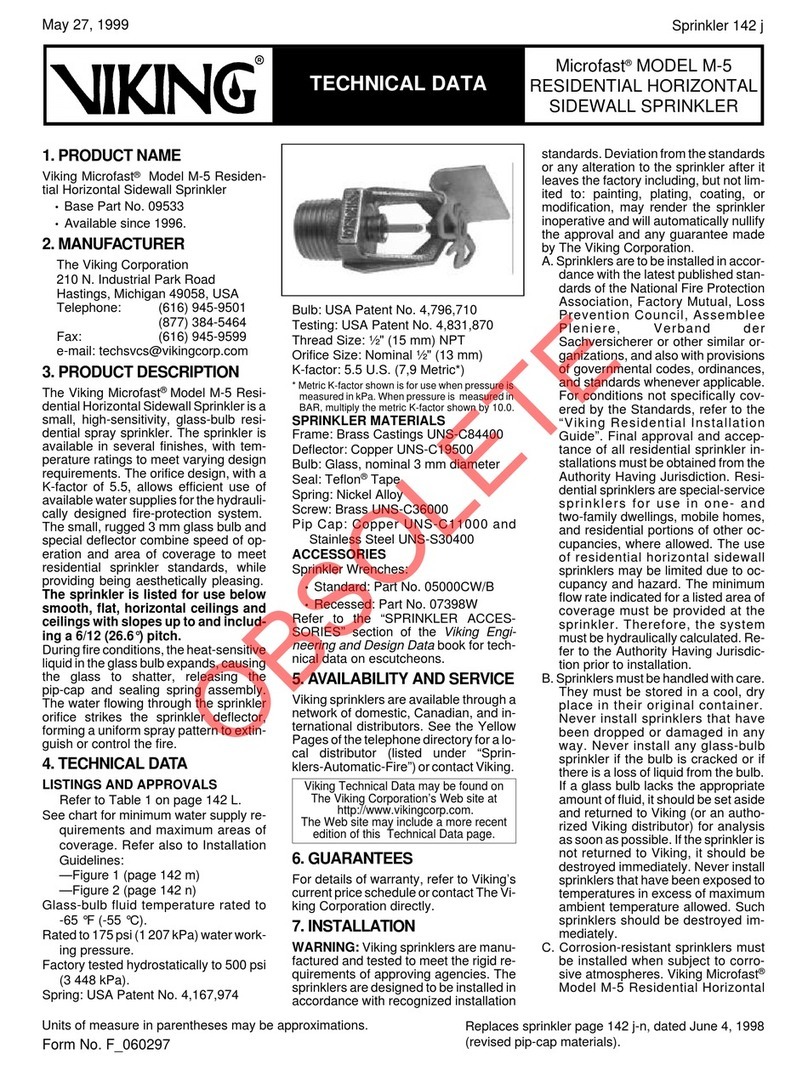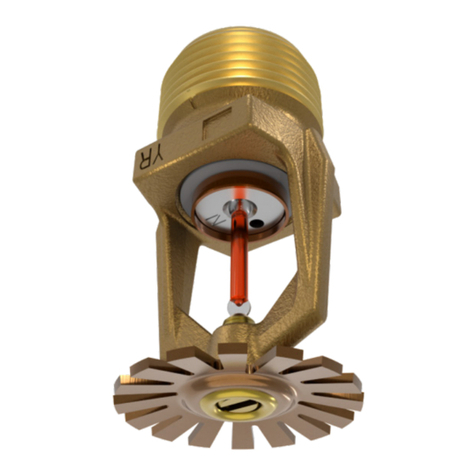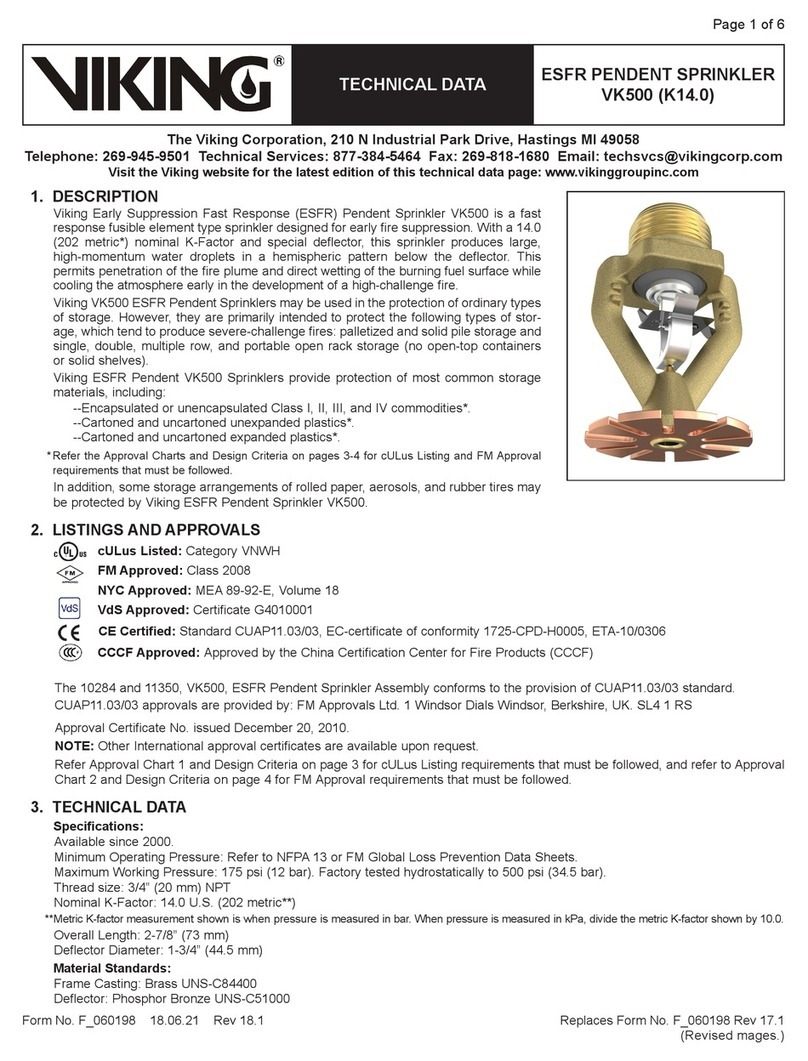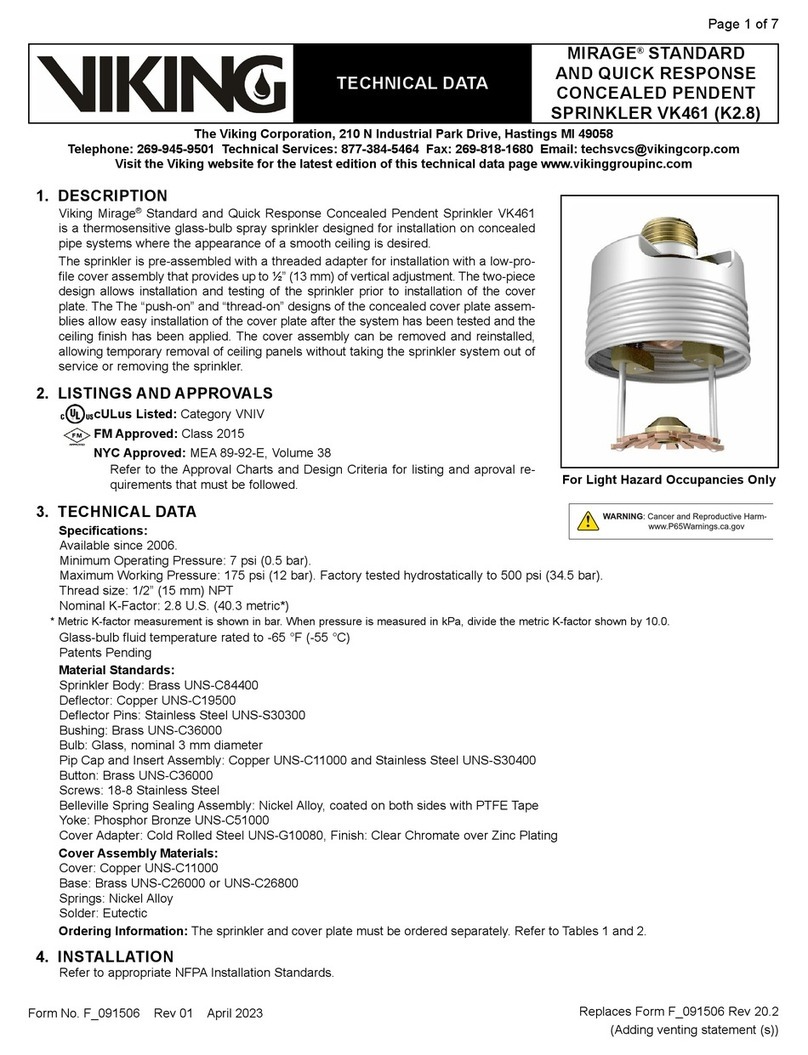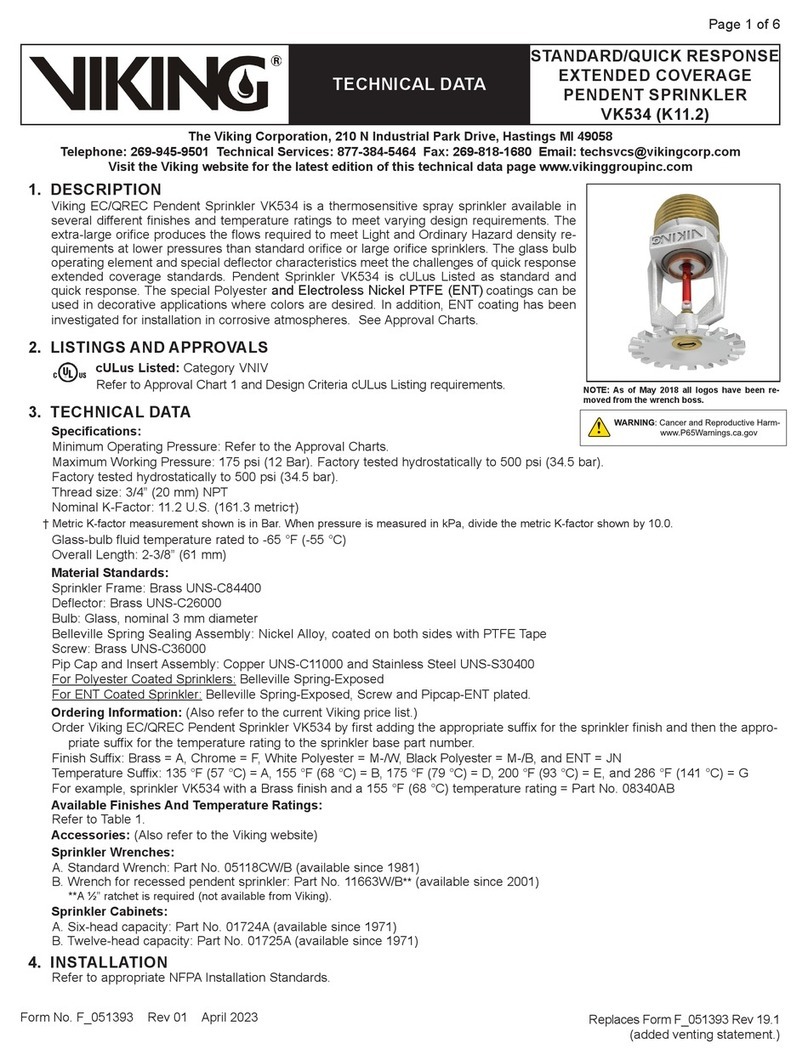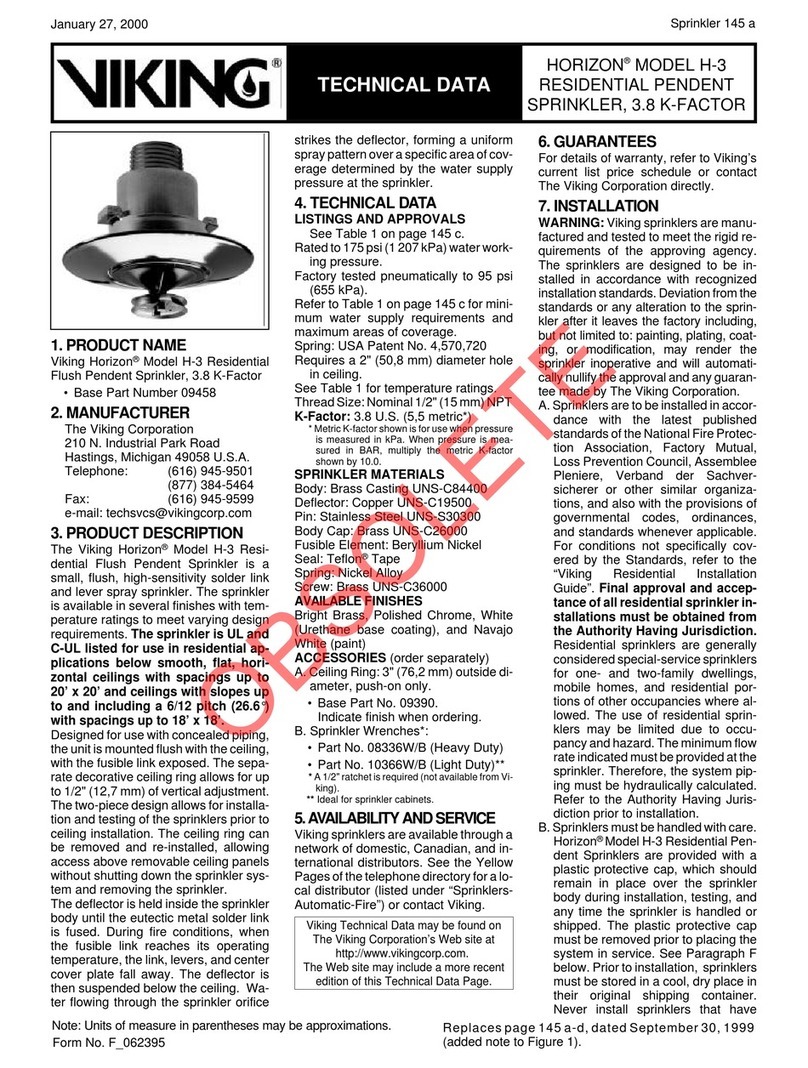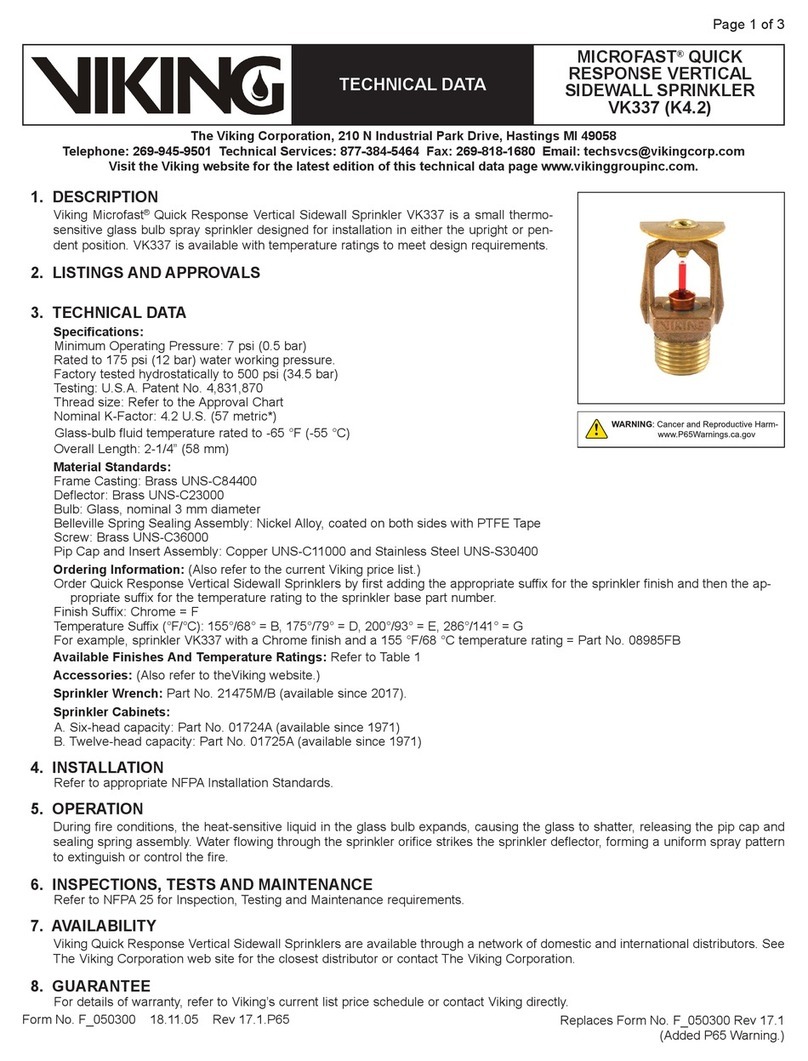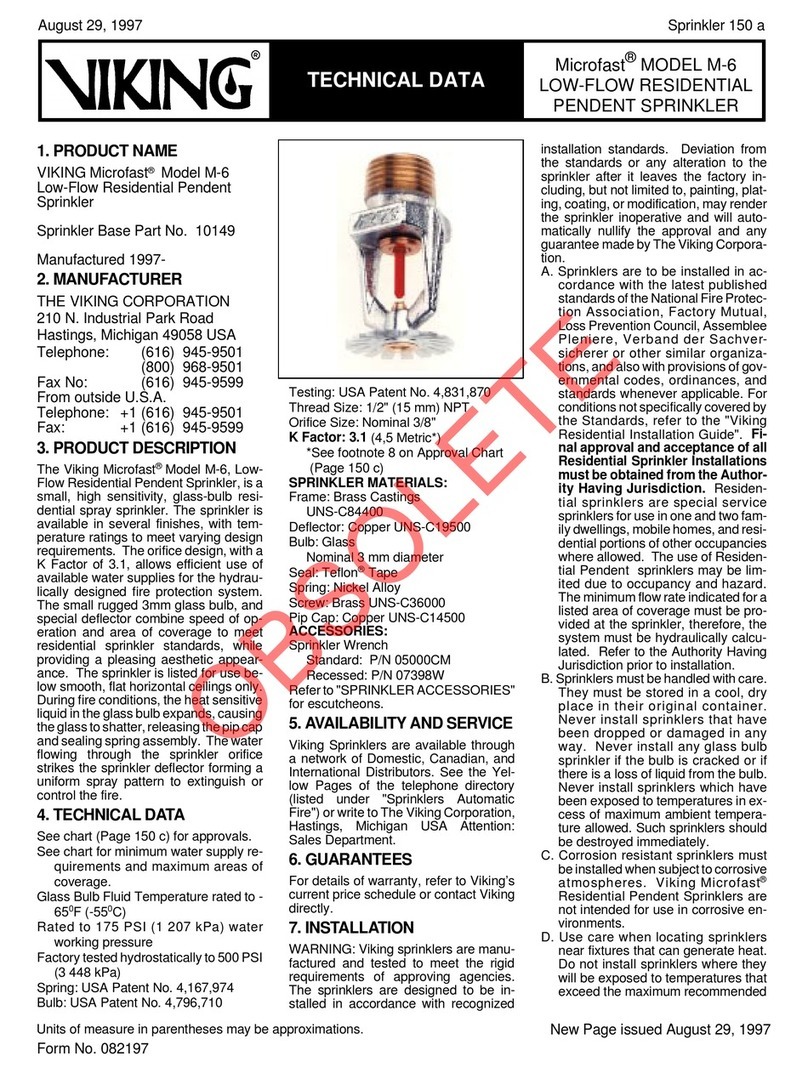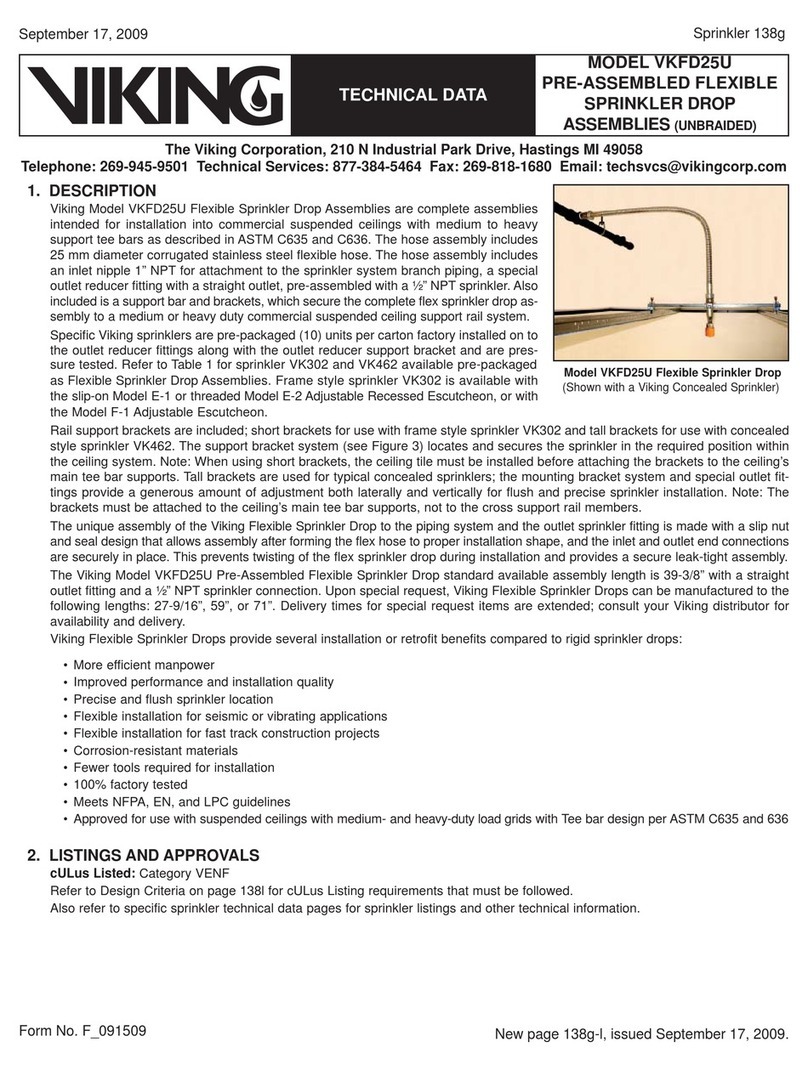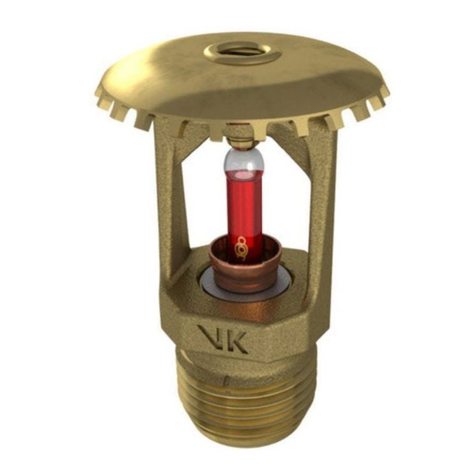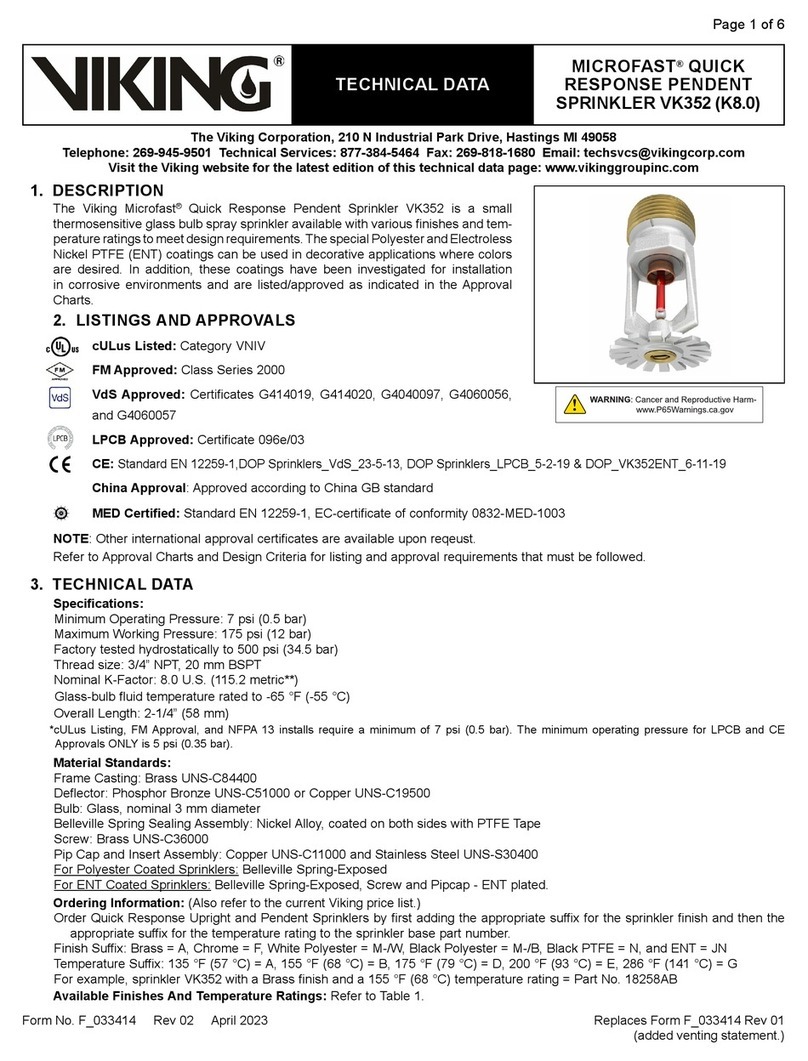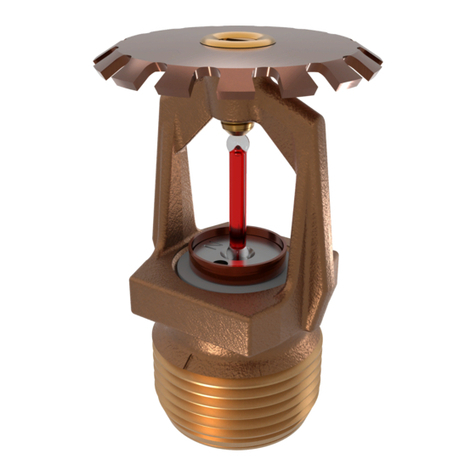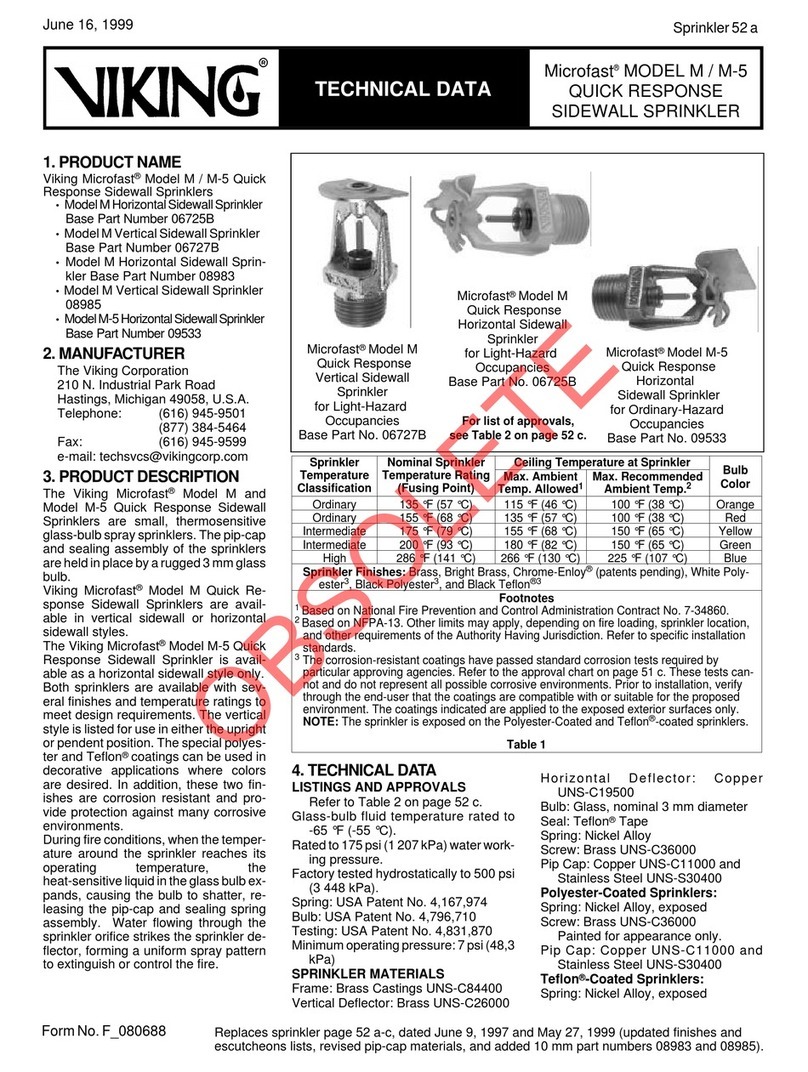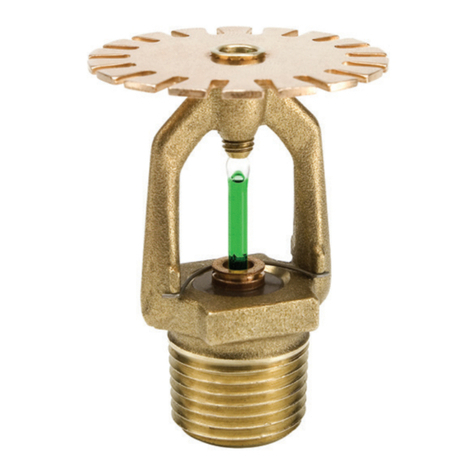
6. GUARANTEES
For details of warranty, refer to Viking’s
currentlistpricescheduleorcontactThe
Viking Corporation directly.
7. INSTALLATION
WARNING:Viking sprinklers are
manufactured and tested to meet the
rigid requirements of approving
agencies. The sprinklers are designed
to be installed in accordance with
recognized installation standards.
Deviation from the standards or any
alteration to the sprinkler after it leaves
the factory including, but not limited to:
painting, plating, coating, or
modification, may render the sprinkler
inoperative and will automatically nullify
the approval and any guarantee made
by The Viking Corporation.
A. Sprinklers are to be installed in
accordance with the latest published
standards of the National Fire
Protection Association, Factory
Mutual, Loss Prevention Council,
Assemblee Pleniere, Verband der
Sachversicherer or other similar
organizations, and also with the
provisions of governmental codes,
ordinances, and standards
whenever applicable. The use of
quick response sprinklers may be
limitedduetooccupancyandhazard.
Refer to the Authority Having
Jurisdiction prior to installation.
B.Sprinklersmustbehandledwithcare.
They must be stored in a cool, dry
place in their original shipping
container. Never install sprinklers
that have been dropped, damaged in
anyway,orexposedtotemperatures
in excess of the maximum ambient
temperature allowed. Never install
any glass-bulb sprinkler if the bulb is
cracked or if there is a loss of liquid
fromthebulb.Ifaglassbulblacksthe
appropriate amount of fluid, it should
be set aside and returned to Viking
(or an authorized Viking distributor)
for analysis as soon as possible. If
thesprinklerisnot returned to Viking,
it should be destroyed immediately.
C. Corrosion-resistant sprinklers must
be installed when subject to
corrosive atmospheres. When
installing corrosion-resistant
sprinklers, take care not to damage
the corrosion-resistant coating. Use
only the special wrench designed for
installingcoatedandrecessedViking
sprinklers (any other wrench may
damage the unit).
D. Use care when locating sprinklers
near fixtures that can generate heat.
Do not install sprinklers where they
will be exposed to temperatures that
exceed the maximum recommended
ambient temperature for the
temperature rating used.
E. Before installation, be sure to have
the appropriate sprinkler model and
style, with the proper orifice size,
temperature rating, and response
characteristics. The sprinklers must
beinstalledafterthepipingisinplace
to prevent mechanical damage.
1. Installescutcheon(ifused), which
is designed to thread onto the
external threads of the sprinkler.
Refer to the “Sprinkler
Accessories”sectionoftheViking
Engineering and Design Data
book for technical data on
approved escutcheons and other
accessories.
2. Apply a small amount of pipe-joint
compound or tape to the external
threads of the sprinkler only,
taking care not to allow a build-up
ofcompoundinthesprinklerinlet.
3. Install the sprinkler on the piping
usingthespecialsprinklerwrench
only, taking care not to
over-tighten or damage the
sprinkler operating parts. DO
NOT use the deflector to start or
thread the sprinkler into a fitting.
F. After installation, the entire sprinkler
systemmustbetestedinaccordance
with the recognized installation
standards. The test is applied after
the sprinkler installation to ensure
that no damage has occurred to the
sprinkler during shipping and
installation, and to make sure the
sprinkler has been properly
tightened. If a thread leak occurs,
normally the sprinkler must be
removed, new pipe-joint compound
or tape applied, and then reinstalled.
This is due to the fact that when the
joint seal is damaged, the sealing
compound or tape is washed out of
the joint. Air testing the sprinkler
piping priorto testing withwater may
be considered in areas where
leakage during testing must be
prevented. Refer to the Installation
Standards and the Authority Having
Jurisdiction.
G. Sprinklers must be protected from
mechanical damage. Wet-pipe
systems must be provided with
adequateheat. When installing quick
response sprinklers on dry systems,
refer to the Installation Standards
and the Authority Having
Jurisdiction.
8. MAINTENANCE
NOTICE:The owner is responsible for
maintaining the fire-protection system
and devices in proper operating
condition. For minimum maintenance
and inspection requirements, refer to
the National Fire Protection
Association’s pamphlet that describes
care and maintenance of sprinkler
systems. In addition, the Authority
Having Jurisdiction may have additional
maintenance, testing, and inspection
requirements that must be followed.
A.Sprinklers must be inspected on a
regular basis for corrosion,
mechanical damage, obstructions,
paint, etc. The frequency of the
inspections may vary due to
corrosive atmospheres, water
supplies, and activity around the
device.
B. Sprinklers that have been painted or
mechanically damaged must be
replaced immediately. Sprinklers
showing signs of corrosion shall be
tested and/or replaced immediately
as required. Quick response
sprinklers that are 20 years old shall
be tested and/or replaced as
required. Sprinklers that have
operated cannot be reassembled or
re-used,butmustbereplaced.When
replacing sprinklers, use only new
sprinklers.
C. The sprinkler discharge pattern is
critical for proper fire protection.
Nothing should be hung from,
attachedto,orotherwiseobstructthe
discharge pattern. All obstructions
must be immediately removed or, if
necessary, additional sprinklers
installed.
D.When replacing existing sprinklers,
the system must be removed from
service.Refertotheappropriate
TECHNICAL DATAMicrofast®MODEL M
QUICK RESPONSE
SPRINKLER
Sprinkler 51 bMay 27, 1999
(Continued on page 51 d)
